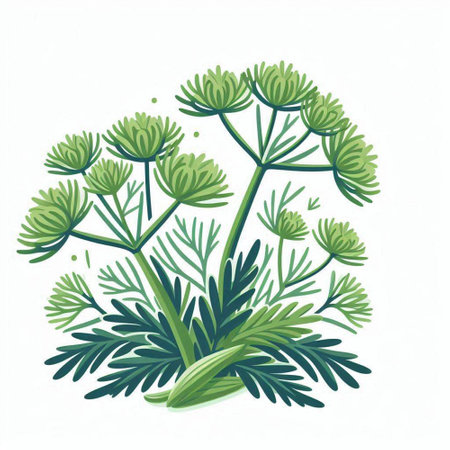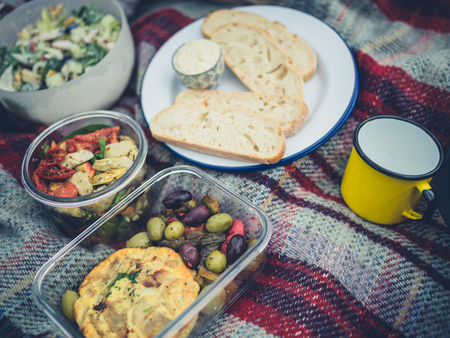1. Understanding the Significance of Green Veggies in Indian Cooking
In every Indian kitchen, green vegetables hold a special place—not just for their vibrant color but for their deep-rooted cultural and nutritional value. Among these, spinach (palak), methi (fenugreek leaves), and sarson ka saag (mustard greens) are household staples that have found their way into countless everyday meals across the subcontinent. These leafy greens are celebrated not only as wholesome ingredients but also as symbols of prosperity, health, and connection to the land.
Spinach is renowned for its versatility; from simple palak bhaji to elaborate palak paneer, it is cherished by all age groups. Methi leaves carry a unique bitterness that is balanced with spices and are believed in Ayurveda to aid digestion and boost immunity. Sarson ka saag, especially during North Indias winter months, is more than food—its tradition. Every Punjabi home knows the joy of relishing sarson ka saag with makki di roti, topped with homemade white butter.
Across India, grandmothers and mothers pass down recipes that honor these greens—each preparation reflecting regional tastes and family customs. Beyond flavor, these veggies are packed with iron, calcium, fiber, and essential vitamins. They help keep energy levels up in the hustle-bustle of daily life and are often recommended for growing children and elders alike.
The instant use of these green veggies is a testament to their adaptability; whether it’s a quick tadka over chopped spinach or tossing fresh methi into dough for soft parathas, Indian households know how to make nutritious eating both convenient and flavorful. The cultural reverence for these greens ensures they remain an integral part of daily meals, festivals, and rituals throughout the year.
2. Selecting and Storing Fresh Greens from Local Indian Markets
When it comes to preparing instant dishes with green veggies like spinach (palak), fenugreek leaves (methi), and mustard greens (sarson ka saag), the secret starts at the vibrant Indian bazaars. Here, freshness is king, and knowing how to pick and store your greens can make all the difference. Let’s break down the process into easy-to-follow steps, reflecting the wisdom of local sabziwalas (vegetable vendors) and home cooks.
Tips for Choosing the Freshest Greens
- Look for Vibrant Color: The freshest spinach, methi, and sarson have deep green hues without yellowing or brown spots.
- Check for Crispness: Gently squeeze a handful; fresh leaves should feel firm and not limp or soggy.
- Smell Matters: Especially with methi, a strong, pleasant aroma is a good indicator of freshness.
- Avoid Wilted Bunches: Steer clear of leaves that are wilted, slimy, or have excess moisture at the base.
Storing Greens for Instant Use
Once you’ve made your selection at the market, proper storage ensures you always have greens ready for instant cooking. Here’s a quick comparison table based on traditional Indian practices:
| Green Veggie | Storage Method | Shelf Life (Days) |
|---|---|---|
| Spinach (Palak) | Wrap in a cotton cloth and refrigerate in vegetable drawer | 3-4 |
| Methi (Fenugreek) | Remove roots, wrap in newspaper, keep in fridge | 4-5 |
| Sarson (Mustard Greens) | Store unwashed in a perforated bag in refrigerator | 5-6 |
Quick Bazaar Hack: Prepping for Instant Use
- Wash greens thoroughly as soon as you reach home to remove dust and pesticides common in Indian markets.
- After washing, dry completely using a clean cotton dupatta or towel before storing—this prevents spoilage.
Bazaar Wisdom:
If buying in bulk for weekly use, divide your greens into daily portions and store separately. This way, you only expose what you need each day to air and moisture—just like seasoned Indian homemakers do!

3. Quick Cleaning and Prepping Amidst Everyday Hustle
In the fast-paced rhythm of Indian households, making time for elaborate veggie prep can be challenging, especially with fresh greens like spinach (palak), methi (fenugreek), and sarson ka saag (mustard greens). Here’s a quick guide to cleaning and chopping these greens efficiently, keeping in mind the typical Indian kitchen setup and daily routine.
Washing Greens: The Desi Way
Start by sorting through your bunches to remove wilted or damaged leaves. In most Indian homes, a large parat (wide basin) or even a deep thali is used. Fill it with ample water and immerse the greens, gently swishing them around to loosen any dirt or sand. Repeat this rinse two to three times, changing water each time, until the water runs clear. For families using a traditional atta chalni (flour sieve), it doubles up perfectly as a colander for draining greens.
Drying for Instant Use
Spread the washed leaves on a clean cotton dupatta or gamcha—a classic North Indian hack—for quick air drying. If you’re pressed for time, pat dry with kitchen towels to absorb excess moisture. This not only speeds up cooking but also preserves nutrients.
Chopping Made Easy
Gather the dried leaves into manageable bundles. Use a sturdy Indian stainless steel knife or the humble boti (traditional cutting tool) if you have one. Stack several leaves together, roll them tightly, and slice into thin ribbons for curries or coarser pieces for saag preparations. Don’t forget to include tender stems—they add both nutrition and flavor!
Tip: Prepping in Advance
If mornings are rushed, wash and chop your greens in advance and store them in airtight dabbas (containers) lined with paper napkins in the fridge. This keeps them fresh for instant use throughout the week—perfect for impromptu palak dal or saag sabzi after a long day.
4. Instant Cooking Techniques: Tadka, Steaming & Bhurji Styles
When it comes to making the most of green veggies like spinach (palak), methi (fenugreek leaves), and sarson ka saag (mustard greens) in Indian kitchens, speed and flavour are key. Indian home cooks swear by several quick-cooking techniques that keep nutrients intact while delivering robust flavours. Here’s a breakdown of some instant methods:
Tadka (Tempering): Flavour Explosion in Minutes
Tadka is a classic Indian technique where spices are quickly sizzled in hot oil or ghee, then poured over cooked or raw greens. This not only infuses the veggies with aroma but also adds depth. For example, mustard seeds, cumin, hing (asafoetida), garlic, and green chillies are commonly used for tadka with saag or spinach. Simply heat oil, add the spices till they crackle, toss in chopped greens for 1-2 minutes, and you’re done!
Steaming: Retaining Goodness & Colour
Steaming is ideal for those who want to preserve the bright colour and nutrition of their leafy greens. In many Indian homes, pressure cookers or idli steamers are used for this purpose. Spinach or sarson can be chopped and steamed within minutes—perfect as a base for curries or as a healthy side dish with just a sprinkle of salt and lemon juice.
Bhurji Style: Wholesome Stir-Fry
Bhurji refers to a scramble-style preparation popular across India. The concept is simple: finely chop your choice of green veggie, sauté quickly with onions, tomatoes, ginger-garlic paste, and masalas. For extra protein, you can add paneer (cottage cheese) or eggs. This method is especially handy for busy mornings or tiffin prep.
Quick Comparison of Techniques
| Technique | Key Ingredients | Time Required | Typical Pairings |
|---|---|---|---|
| Tadka | Oil/ghee, spices, chopped greens | 5 mins | Roti, dal-rice |
| Steaming | Chopped greens, salt/lemon (optional) | 7-10 mins | Sides, curry base |
| Bhurji | Greens, onion/tomato, masalas, paneer/egg (optional) | 10-12 mins | Pav bread, paratha |
Pro Tips from Indian Kitchens:
- Add a pinch of garam masala at the end for richer flavour in bhurjis.
- If using methi (fenugreek), lightly salt and squeeze out bitterness before cooking.
- Tadka can be customised with local spices such as kalonji (nigella) or curry leaves based on regional taste.
These instant cooking techniques ensure that nutritious greens like spinach, methi, and sarson ka saag fit perfectly into daily Indian meals—balancing convenience with authentic flavours straight from the heart of desi kitchens.
5. Balancing Flavours with Indian Masalas and Achar
When it comes to making the most of green veggies like spinach, methi, and sarson ka saag, the real magic happens with the addition of local Indian masalas and classic sides. There is a reason why every desi kitchen shelf is lined up with jars of vibrant spices and tangy achars—these ingredients are the backbone of our flavourful meals.
The Role of Masalas in Enhancing Greens
Indian masalas such as jeera (cumin), hing (asafoetida), dhania powder (coriander), and garam masala can transform even the simplest sabzi into something irresistible. For instance, while sautéing palak or methi, just a tadka of ginger-garlic paste, green chillies, and a generous sprinkle of masalas elevates their taste to another level. Sarson ka saag especially shines with a mix of red chilli powder, turmeric, and homemade garam masala blended right at the end.
Achar & Dahi: The Perfect Companions
No meal featuring leafy greens is complete without achar (pickle) and dahi (curd) on the side. The tanginess of mango or mixed vegetable achar brings a spicy kick that cuts through the earthiness of greens, making each bite more exciting. Meanwhile, a dollop of chilled dahi balances out the heat from the spices and helps in digestion—a true win-win for both taste buds and tummy.
Local Touches That Matter
In many North Indian homes, people often add a squeeze of fresh lemon or sprinkle some chaat masala over their saag for an extra zing. In Gujarat, people love pairing methi sabzi with sweet-sour chundo pickle, while in Punjab, sarson ka saag always finds its soulmate in mirchi achar. These little touches reflect how every region has its own way of balancing flavours according to local preferences.
Pro Tip: Experiment with Homemade Masala Mixes
If you’re car-camping or living out of your vehicle, carry small containers of your favourite homemade masalas—think roasted cumin powder, black salt, or dry ginger powder. They take up minimal space but add maximum punch to any instant green veggie preparation.
So next time you whip up some quick greens, don’t forget to experiment with different masalas and sides like achar and dahi. These humble additions are what make simple veggies feel like a feast on your plate—no matter where you park your ride for dinner!
6. Serving Suggestions: Pairing with Rotis, Rice & Desi Bread
Nothing brings out the authentic taste of green veggies like Spinach, Methi, and Sarson Ka Saag better than the classic Indian accompaniments. Traditionally, after you’ve prepped your greens instantly and they’re still vibrant and fresh, serving them with the right staples makes all the difference.
Rotis: The Quintessential Partner
Freshly puffed phulkas or whole wheat rotis are hands-down the go-to pairing for any leafy saag in desi households. Smear a little homemade ghee on top of your hot roti, scoop up a generous helping of sarson ka saag or methi bhaji, and enjoy the earthy comfort that’s so typical of Punjabi kitchens. For extra indulgence, try makki di roti (cornmeal flatbread), especially during winters—this combo with saag is literally legendary in North India.
Rice: A Soulful Combination
If you’re more of a rice person, don’t hesitate to serve your spinach or methi sabzi over steamed basmati rice or jeera rice (cumin-flavoured rice). This method is especially popular in South Indian and Bengali homes where greens are often mixed with rice and a drizzle of ghee for lunch or dinner. For an added touch, sprinkle some freshly ground black pepper or roasted cumin powder.
Desi Breads: Beyond the Basics
Expand your pairing options by matching your green veggie dishes with parathas (stuffed or plain), bajra rotla (pearl millet flatbread), or even kulchas and naan for festive family gatherings. Each bread offers a unique texture and flavor profile that complements the mild bitterness and richness of greens. Don’t forget to serve some raw onions, green chillies, and maybe a dollop of homemade white butter on the side—it’s a desi tradition!
Typical Family Meal Vibes
The heartwarming essence of an Indian meal comes alive when everyone sits together, sharing hot rotis straight off the tawa, scooping up portions of saag, laughing over stories and passing around achar (pickle) and dahi (curd). This communal style not only enhances flavour but also deepens bonds at home. So next time you prep your greens instantly, keep these classic combos in mind to enjoy them just like an Indian family would—simple, hearty, and full of local flavour.


